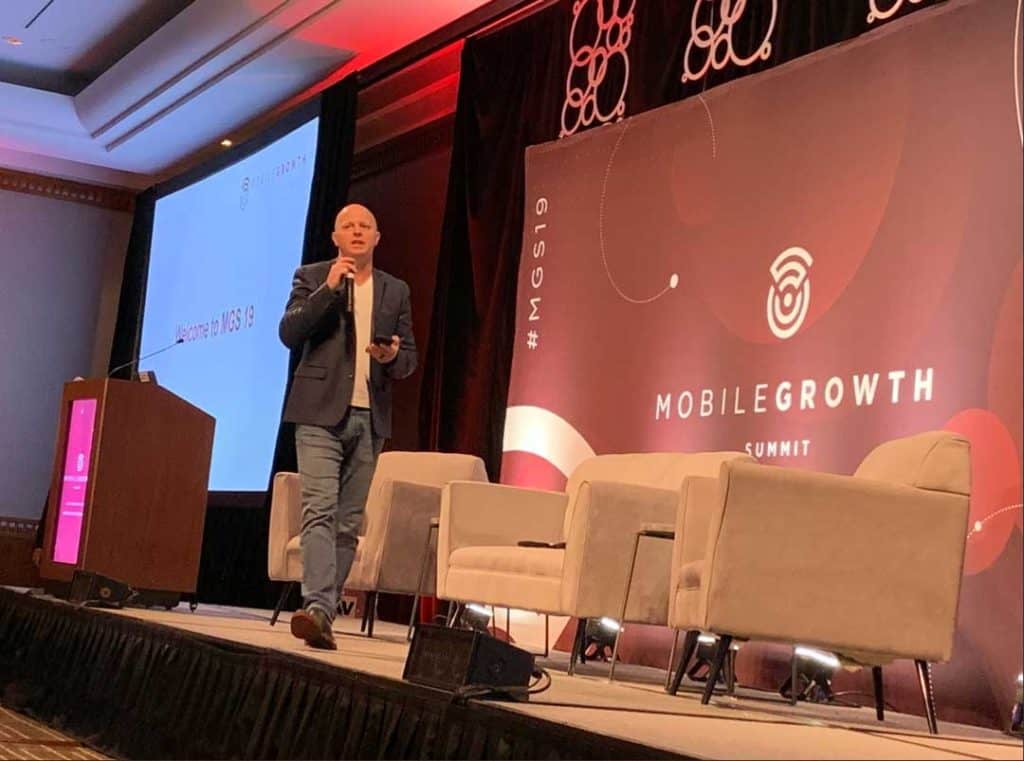Trendy App Store Marketing Tips 2019: Takeaways from Conferences
February was a good month for me, attending various conferences in L.A. and San Francisco, getting to know so many new trends and pools of talent in different areas of app growth marketing, user acquisition, and retention.
Not everyone gets the privilege to attend these conferences, so we have summarized some top notes here for you.
New Perspectives on Mobile Growth Marketing

Source @mobilegrowthMGS Twitter
One of my favorite talks from the App Growth Summit in L.A., from a macro perspective of app growth marketing, was from Lomit Patel, VP of Growth at IMVU. Basically, Lomit was saying, “Whoever tells you there are tons of secret methods to drive growth is misleading you. The real success is to run as many A/B tests as possible that would lead you to test, learn, and iterate as quickly as possible, by finding small wins that end up compounding into massive growth in the long-term.”

Lomit Patel speaking, Source @mobilegrowthMGS Twitter
Obviously, the whole A/B testing and hypotheses development have to be scientific based on some best practices, but as an organization, the big lesson here is not to sit back and do too much analysis paralysis. Your competitors are already running tons of experiments daily so should you.
I can connect to this with our daily operation at App Growth Network, and this is something we tell our clients. We often have a partnership together and we are in it together. Via our collaborative efforts, we will develop 5-6 hypotheses together, where 60-70% can be proven right and 30-40% can be proven wrong. As long as this is documented and we learn what not to do next time, we all win as a team in long run.
We also heard from Chang Chen from Aisense, the company behind Otter, at the Mobile Growth Summit in San Francisco. Otter is an app that offers transcription and voice notes. She brought up the shift in our digital search patterns and the fact that Google is no longer the number one place to search for answers. Our daily habits change. Using the popular App Store for apps, Amazon for eCommerce, Instagram, YouTube, and many more connects us with new channels that we feel comfortable to get answers from.
How can we, as marketers, rank well and harvest traffic from each of these channels without spending unsustainable resources? She suggested to share knowledge and exchange continuous information with trusted sources.
“I enjoy connecting with other growth marketers to learn from them and share my learnings. With all the new channels popping up every day and the frequent algo changes for each channel, it’s just impossible and inefficient to run experiments and gain the learnings on my own. I’m in a few Slack and email groups where other growth leaders will post findings and observations. It’s usually a quick note like:
‘Hey folks, give XX a try. Jump in before others do.’
or
‘Anyone else seeing the performance dip on XX channel? A potential algo change?’
I find that really useful, and I’ll share my observations as well. On a different note, I’m all about content repurposing. I hope I’m not alone, but content creation is just a lot of work. Once we spend the time, create a piece of killer content, I’d like to share it out to as many people as possible, distribute it across as many channels as possible, and re-share it as many times as possible. You hear it right. It’s okay to reshare the content again and again. On all channels, we are gaining new followers every day. These new friends haven’t necessarily seen this article or video yet. When we distribute the content across different channels, we want to tweak the content based on our understanding of the channel and the audience.”
Personally, I became obsessed with Otter after the conference, downloaded it on my phone and used it to create new content. This will save you tons of time creating the first draft of your content and will allow you to create tons of frameworks for content creation. It also saves time on manual note-taking and documentation.
Whoever I spoke with in the past few weeks about this app has become obsessed with it. As Chang mentioned, Search engines are getting crowded. There are over a billion blogs if you include WordPress.com, Medium, and Tumblr. If you want to rank number 1 on Google, you need to write lengthy content because the average web page that ranks on page 1 of Google contains 1,890 words. If you want to gain thousands of followers on Instagram, you need to have videos in your posts or in the stories with captions because most of the viewers on Ins turn off the sounds. The rise of AI and voice is changing our dynamics, and as growth marketers, we need to leverage this.
Get Your Tracking in Place
You also need to remember to activate your users. A big part of the ASO algorithm relies on the ratio of your retained users over total installs, especially in the onboarding stage. Stores know that your users searched for a query and uninstalled your app and will push you down for that query.
Measure all the activities from the app and other mobile channels. Getting the right attribution in place is critical, so we visited our friends in Adjust. As an Adjust certified partner agency, we look up to them for the most up-to-date attribution news because it is very critical to grow any app above and beyond regular channels.
We heard Adjust rolled out a web SDK that will allow clients to track installs, sessions, and events happening in web apps or on a web page. By utilizing Adjust’s mobile SDK, you will be able to implement cross-device tracking through your own BI system. Adjust is also leading the industry when it comes to combating mobile ad fraud and have recently implemented click validation, ensuring for every click, there must be an impression.
Once the users hit your app, you want to have a tool such as CleverTap in the product to take care of the retention, analytics, onboarding fixes, as well as your SMS and email integration all in one dashboard. CleverTap supports a granular behavioral user segmentation engine where you can segment based on actions a user has or has not taken and predict user intent.
CleverTap helps consumer brands retain their users for life. Growth teams use CleverTap’s automation, AI/ML, and personalization capabilities to manage and improve customer lifecycle by delivering the most consistent experience across all touchpoints. With a unique combination of a unified data platform, automated segmentation and insights, and omnichannel engagement, CleverTap enables brands to optimize customer experiences in real-time and at scale.
We heard from Alex Moeser, Sr. Regional Sales Director of Clever Tap at the Mobile Growth Summit. CleverTap’s automated segmentation tool uncovers common behaviours from billions of data points to identify your most valuable customer segments. “ML synthesizes data insights that connect the dots between critical customer interactions such as user’s purchase history, app activity, browsing behavior, and device preferences to deliver a more end-to-end experience. Further, its new capability that segments users on intent is an excellent example of driving more relevant end-to-end experiences that directly tie to business goals. While CT’s automated segmentation capability is powerful, its manual, behavioral segmentation is also robust. Its ability to track user interactions in real-time and build user profiles dynamically (with nearly 250 profile attributes) informs targeting and messaging for users looking to drive growth.”
The Rise of Instant Apps in the Play Store:
We also got a chance to meet with Brian Murphy from App on Board. There are a lot of changes happening in the Play Store with everything that’s going on with the rise of instant apps, how companies like App On Board are working with Google to enhance the user experience. Basically, you would see a video trailer of an app playing, and the fact that you can actually try before you install it is going to be revolutionizing, in my opinion, and changing how the Play Store behaves. It would be interesting to find out how this impacts app store optimization.
As you all know, the ratio of app install / query impression volume is the ranking signal for the stores for relevance. In this case, apps are entering a try mode and an install has not happened yet. How does Google factor this into the equation? Impression to try now and then try now to install now? We are looking forward to hear more from both Google and App On Board on such studies, but it seems that it is going in amazing directions. Stay tuned.
App Store Optimization News
We also caught up with Olivier Verdin and Laurie Galazzo, CEO and CMO of App Tweak, about the latest ASO trends and their product updates. AppTweak is an app store optimization (ASO) tool driven by data science and provides all the data and insights you need to increase the visibility of your apps and games, increase app rankings, and boost organic app downloads in the stores.
Focused on data accuracy, AppTweak constantly strives to bring new features and indicators relevant to ASO professionals. Some of their latest developments include Timeline Metadata History with data going as far back as 2015 and the new, unique Search Ads keywords insights.
AppTweak has also recently launched an estimation of the monthly downloads per keyword, a long-awaited insight by the entire app marketing industry. To calculate this data, AppTweak estimates the number of organic downloads given a keyword search popularity. Then, AppTweak determines a share of those organic downloads the app would get according to its rank on that given term.
All of AppTweak’s features have been built to facilitate competition comparison in order to effectively outrank competitors’ app marketing strategies. AppTweak won the award “Best ASO company” at the App Growth Awards in 2018. We are going to publish a separate article in the next few weeks about the details of these updates.

Advanced Play Store Experiments
This is something we recently discovered atApp Growth Network so I included it here. Start with the Play Store today as it is super easy and does not require a new build submission. The best place to do this is on the short description and asset testing. The value of agile A/B testing ability on the Google Play Store is magical. As a Go Google First agency, we feel that every day.
Experiment this today: The Google Play short description experiment is an awesome place to actually play around a lot of different keywords. You can try a couple of different variations of it, more keywords that you want to test. If you’re not super thrilled about some of those keywords, it doesn’t matter. You can put 0.1%-10% of your traffic there to test so you don’t hurt the user experience. Surprisingly, Google puts some weight on those experiments and indexes them. Do not be spammy or abuse this by stuffing your competitors’ name. You could potentially get banned by trademark infringements. Be strategic about it. Now, can you imagine the global option in multiple countries and what you can do with this?
There are tons of talks about the universal app campaigns. Some of the largest apps complain that this does not convert well for them or have no effect on their organic downloads. Partially right, and this is changing big time with the audience and exclusion introductions. Do not fight for the U.S market all the time. Test another geo such as France or Germany next to see the behavior. If your app is only in English, try South Africa or Australia next time. Do not underestimate the power of global effect on the ratings, reviews, social sharing, and the network effects.
For smaller apps, sometimes, some extra downloads could have tons of meaningful effects. I am talking about app economics. The dynamic of a product requires social proof. The fact is you are not alone. Some apps these days need enough users to get group activates, reviews on the provider, and more users can help you. There is a higher value for having 20% more users at 30% more cost than 20% less users at 20% less cost. Trust me on this. It is not a linear graph.
We’re always happy to help and provide feedback on what we’re learning by doing work with clients and from the networks that we are connected with, so keep in touch. We’re going to constantly update the series on different topics, so stay tuned.
About this article: Fouad Saeidi is the Founder & CEO of App Growth Network. He is an industry veteran with over a decade of digital and 6+ years of mobile app marketing experience working with over 50 million downloads in the portfolio.
Related Articles
For Wellness apps, the most challenging approach is the conversion of the user from passive to active. [...]
In the realm of App Store Optimization (ASO) for iOS applications, a relatively untapped yet highly effective strategy [...]
In today's competitive app market, it's crucial for app developers and marketers to reach a wider audience and [...]










